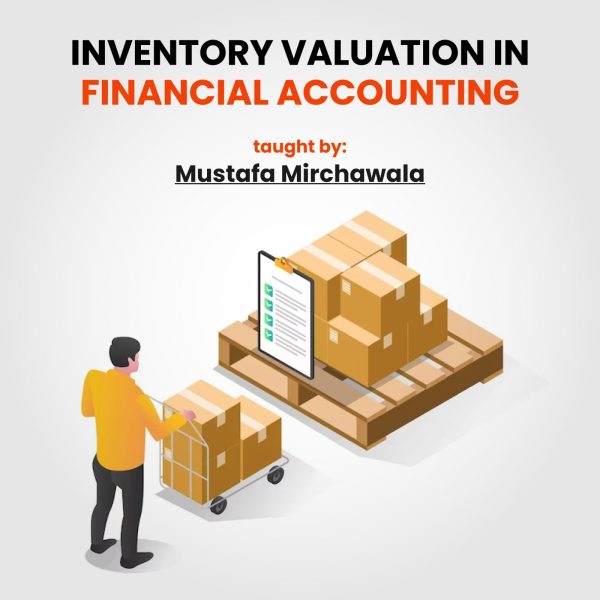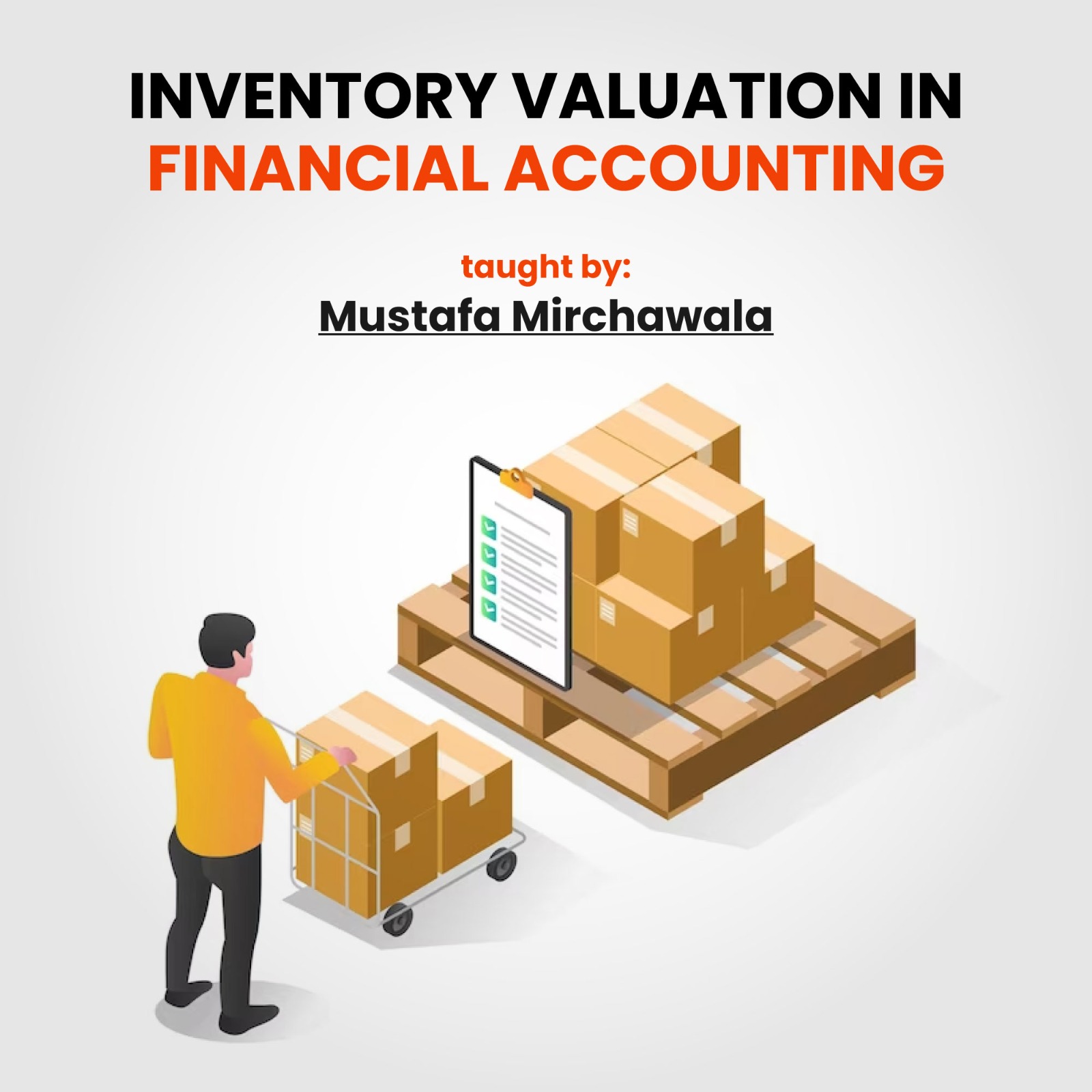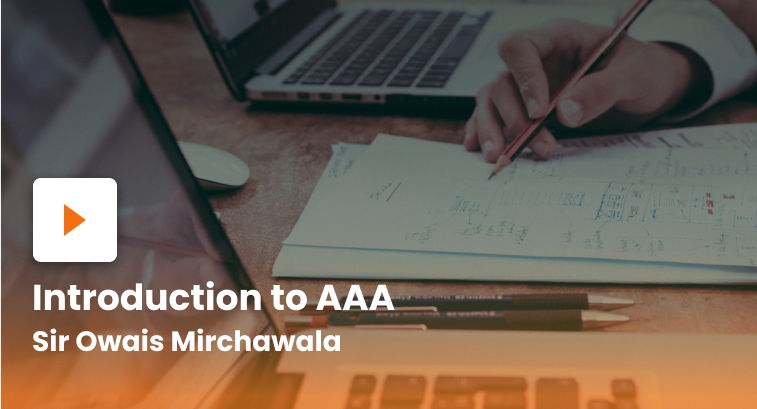Theories of inventory valuation in financial accounting
Inventory valuation – ACCA financial accounting
Goods that are intended for sale or that are unsold are referred to as inventory. Each financial year, inventory is valued in order to determine the cost of goods sold and the cost of unsold inventory.

Inventory valuation represents the monetary value associated with the goods in stock at the end of an accounting period. Accountants are legally required to record the inventory at the beginning and end of the year to compute the difference. This difference is then booked as an accounting entry to validate and declare the inventory moment.
Inventory valuation is taught by Mustafa mirchawala is multiple ACCA exams of Financial accounting therefore it is crucial to clear your concepts since day one .
Cost of goods sold in ACCA financial accounting – FA
Cost of goods sold, commonly referred to as COGS, are the expenses directly associated with producing a product, such as the cost and transportation of raw materials, labor needed to manufacture the goods, and storage fees.
COGS does not include indirect costs – such as sales, marketing or distribution expenses. From an accounting perspective, COGS is not an asset, nor it is a liability, it is recorded as an expense in the income statement.
The cost of goods sold relies on the value of inventory during an accounting period, which can be calculated by the formula:
COGS = Opening stock + Purchases – Closing Stock
(Unsold stock at the end of an accounting period is referred to as closing stock. The purchase cost of these goods should not be included therefore in the cost of goods sold)
Example :
As an example if a business has a beginning inventory of $9,000, makes purchases valued at $5,000, and is left with an ending inventory of $2,000, the costs of goods sold is $12,000.
COGS = $9,000 + $5,000 – $2,000
COGS = $12,000
Understanding the COGS is important for many reasons, including; setting prices that leave healthy profit margins; and driving important decision-making, like finding new vendors with better material prices; and it is a key component in determining a business’s gross profit and net income.
Inventory written off
Due to various circumstances that may arise with the items prior to their sale, a trader may not be able to sell every item they buy. Goods might:
- Be lost or stolen
- Be damaged
- Become obsolete or out of fashion
Goods lost/stolen:
If the stock stolen is uninsured, the firm will suffer a loss as their “sales value” will be zero and this loss will be booked as an expense in the income statement. Since the stolen stock is not included in sales, it will also be deducted from the cost of goods sold.
The same happens if the stock stolen is partially or fully insured but in this case we will book insurance claims as other income in the statement of profit and loss.
Goods damaged:
It’s possible for items to sustain damage and lose value. Items with such damage might be discarded. The damaged goods have the same treatment in the income statement as the stock stolen.
Goods obsoleted :
Goods may go out of style or become outdated. It may be necessary to discard things or perhaps offer them for a very low price in a clearance sale. When goods lose value because they have become obsolete or out of fashion, the business will make a loss if their clearance sales value is less than their cost.
Prudence concepts :
The prudence concept refers to a crucial principle used in accounting to ensure that income and assets are not overstated in financial statements. It also makes sure that liabilities are not understated and provisions are made for income and losses. According to the prudence concept, income should not be booked until realized but losses should be booked immediately.
As we should not record future profit, we record inventory on cost not on selling price.
IAS-2 requires inventories to be measured at the lower of cost and net realizable value (NRV).
Net Realizable Value (NRV) of inventory is the estimated selling price less any costs still to be incurred in getting the inventory ready to sell it.
NRV = Selling Price – Cost to sell
Example Question 1:
At 30th June 20X2, David’s inventory was valued at its costs of $45,000. This includes items costing $2,600 which have since been superseded by an updated design. David will be able to sell these items through an agent for $1,400. The agent’s commission will be 10% of the selling price. What was the correct value of closing inventory on 30th June 20X2?
Solution:
Cost of Inventory: $45,000
Inventory superseded: ($2,600)
= $42,400
NRV: Selling price – Cost to sell
= $1,400 – $140
= $1,260
Since the NRV is less than the cost of the obsolete inventory the stock will be recorded at NRV and as we have to find the closing stock NRV will be added back to the previous inventory value.
$42,400 + $1,260 = $43,660
Closing stock is shown as a current asset. The business’s financial status is ascertained by looking at the closing stock value on the balance sheet. An inaccurate representation of the working capital position and the overall financial situation might result from overvaluation or undervaluation.
IAS 2 was first issued in 1975 and has been revised on a number of occasions*. However, its fundamental requirements have remained substantially unchanged. Read more
Valuing inventory :
Inventory valuation is an accounting practice that is followed by companies to find out the value of unsold inventory stock at the time they are preparing their financial statements.
A periodic inventory system is used by many businesses to count goods. Companies use this approach to evaluate their inventory at the conclusion of an accounting period.
A perpetual inventory system is an option that keeps track of each sale and purchase order and updates inventory on a regular basis to reflect those activities.
Inventory can be valued in different ways:
- First-In-First-Out (FIFO)
This strategy is based on the premise that the first inventory acquired is the first to be sold. The remaining inventory assets are matched to the most recently acquired or generated assets.
It is one of the most common methods of inventory valuation employed by organizations since it is basic and easy to grasp. During inflation, the FIFO approach results in a greater ending inventory value, a lower cost of goods sold, and a larger gross profit.
- Last-In, First-Out (LIFO)
Under this inventory valuation method, the assumption is that the newer inventory is sold first while the older inventory remains in stock. This method is hardly used by businesses since the older inventories are rarely sold and gradually lose their value. The only reason to use LIFO is when businesses expect the inventory cost to increase over time and lead to a price inflation.
- Weighted Average Cost
Under the weighted average cost method, the weighted average is used to determine the amount that goes into the cost of goods sold and inventory. Weighted average cost per unit is calculated as follows:
Weighted Average Cost Per Unit = Total Cost of Goods in Inventory / Total Units in Inventory
This method is commonly used to determine a cost for units that are indistinguishable from one another and it is difficult to track the individual costs.
You must keep an eye on changes in inventory costs to determine which approach is best for you.
- If you are experiencing a decrease in the cost of inventory, FIFO might be the best option for you.
- For a more accurate cost, use the FIFO method of inventory valuation as it assumes the older items that are less costly are the ones sold first.
- It is also important to note businesses cannot switch from one method of inventory valuation to another. If your business decides to change to LIFO accounting from FIFO accounting, you need to file some forms with the IFRS.
Cost of inventories
The expenditures incurred by buying, holding, and overseeing goods along the whole e-commerce supply chain are referred to as inventory costs.
Two of the cost of inventories are:
Purchase cost
This is basically the nominal cost of an inventory. It is the cost incurred in buying from the outside sources and it would be known as production cost if the items are produced within the organization. The cost for a unit may vary but according to the quantity purchased increases or decreases. For e.g.
- Transport cost
- Import duties
- Insurance-in-transit
- Freight charges.
Some businesses, such as retailers, buy finished goods inventory that is ready for resale as soon as they receive it. Alternatively, you might purchase component parts, and assemble them into new products for sale. Still others purchase raw materials directly and either resell the materials or assemble materials into semi-finished or finished goods before sale.
The key to keeping inventory purchase costs low is to develop long-term, mutually beneficial partnerships with reliable suppliers. Suppliers can offer you price/volume discounts or price contracts to keep your costs at a reasonable level.
Conversion cost
Conversion costs are those production costs required to convert raw materials into completed products.
Conversion costs = Direct material + Direct labor + Direct expenses + All Manufacturing overhead
For e.g.
- Factory manager salary
- Building depreciation
- Plant and machine depreciation
- Production utilities
Frequently Asked Questions- Inventory valuation|ACCA financial accounting exam:
- Why is inventory not valued at the expected selling price?
Ans. Valuation at selling price would create a profit for the business before the inventory was sold.
- What is NRV?
Ans. NRV is the expected selling price of inventories less any cost still to be incurred in getting them ready for sale.
- Why does FIFO give a higher ending inventory value?
Ans. With the FIFO method, since the lower value of goods are sold first, the ending inventory tends to be worth a greater value.
written by shahid tazmeen – student of Mirchawala hub of accounatncy






[…] December 8, 2023 […]
[…] the Foundations: Understanding F3 ACCA Frameworks In the world Read more December 8, […]
[…] the Foundations: Understanding F3 ACCA Frameworks In the world Read more December 8, […]
Comments are closed.